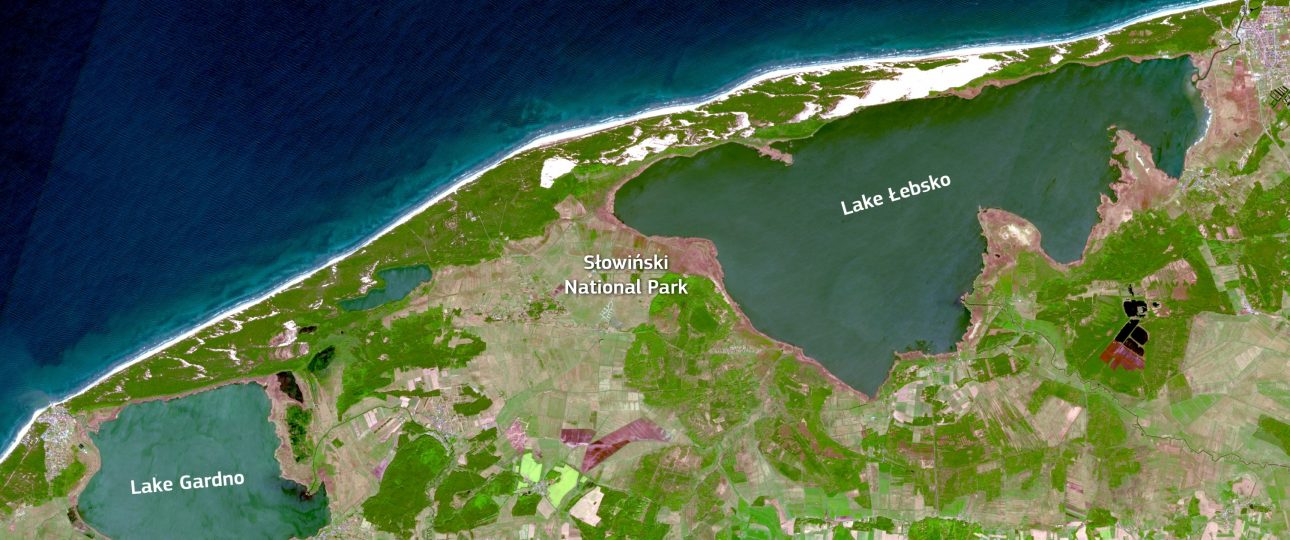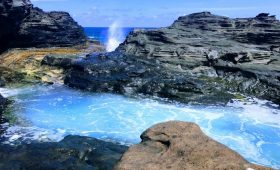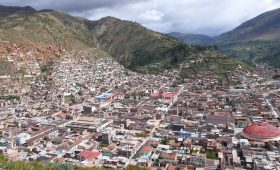Exploring Słowiński National Park
Słowiński National Park, located on Poland’s Baltic coast, offers a unique landscape of sand dunes, lakes, and diverse ecosystems. This park is a fascinating destination for those interested in natural beauty and ecological diversity.
The Landscape
The park is renowned for its shifting sand dunes, some reaching up to 30 meters in height. These dunes, often referred to as “moving mountains,” are shaped by the relentless forces of wind and water. As you traverse the park, you’ll encounter a dynamic landscape that includes both sandy and grassy dunes, often topped with pine forests. South of the dunes lie the expansive lakes Łebsko and Gardno, which serve as wildlife refuges with minimal water traffic. The area between and south of these lakes is characterized by marshy and swampy terrain, interspersed with deciduous forests.
Climate and Best Time to Visit
The park enjoys an oceanic climate, with mild weather year-round. Winters are cool, with temperatures generally above freezing, while summers are warm, rarely exceeding 25 degrees Celsius. Rain is frequent, and snow is rare. The peak tourist season is from June to August, but visiting during the shoulder months of April to May or September to October can offer a quieter experience with pleasant weather.
Getting There
The nearest major airport is Gdańsk Lech Wałęsa Airport, which connects to various European cities. From there, you can take a train or bus to Lębork, and then a minibus operated by Boguś Bus to Łeba, a town near the park. The journey from Lębork to Łeba takes about 45 minutes. Once in Łeba, the park entrance is approximately 3 km west, accessible by foot or bicycle.
Getting Around
Exploring Słowiński National Park is best done on foot or by bicycle. The park features well-marked trails that lead to the dunes and other attractions. Bicycles can be rented in Łeba for about 20 zł per day. While walking or cycling, you can enjoy views of Łebsko Lake on one side and the Baltic Sea on the other. Organized tours are available for those who prefer guided experiences, offering insights into the park’s history and ecology.
What to See
- Wydma Łącka: The largest accessible dune in the park, offering panoramic views from 30 meters above sea level.
- Słowiński National Park Museum: Located in Czołpino, this museum provides exhibits on the park’s flora, fauna, and navigation history.
- Submerged Forest: A fascinating site of a forest submerged in the Baltic Sea around 3,000 years ago, now occasionally visible due to shifting sands.
- Czołpino Lighthouse: An observation point offering views of the sea and the park’s lakes.
- Slovincian Countryside Museum: A museum in Kluki showcasing traditional life and architecture in the region.
- Great Swamp: A prime birdwatching area, especially for migratory species.
While the park offers a wealth of natural beauty, it’s important to note that backcountry camping is not permitted. Visitors should plan to stay in designated accommodations outside the park boundaries. With its diverse landscapes and rich ecosystems, Słowiński National Park provides a rewarding experience for those willing to explore its trails and attractions.



